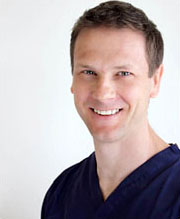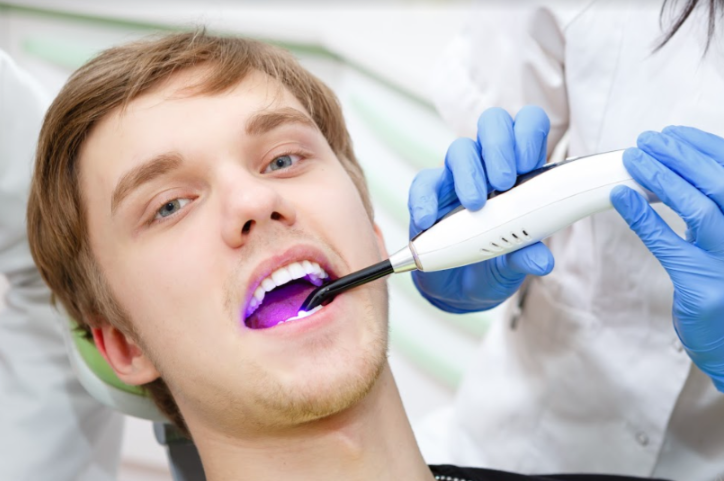Technological advancements in the field of dentistry have revolutionised some of the procedures carried out in a modern dental practice.
Laser dentistry, first used in 1989, has replaced some of the noisy and invasive procedures you may associate with a dentist.
Laser dentistry involves a narrow and very focused beam of light energy to cut or vaporise tissues — and can work as a heat source too.
Lasers have a variety of uses for both soft tissue (like gums) and hard tissue (like teeth). As a result, laser technology has been incorporated into a variety of specialised tools and dental techniques.
What types of dental treatments use lasers?
There are now a wide range of dental procedures and cosmetic dental treatments that incorporate the use of lasers.
For Teeth:
- Lasers are used to detect cavities in the teeth.
- A laser may be used to kill off bacteria before filling a tooth or during root canal therapy.
- Laser treatment may be used to seal the root of tooth where tooth sensitivity is an issue.
For soft tissue:
- Lasers can be used to reshape a ‘gummy smile’ in cosmetic dentistry.
- It may be used to reshape gum tissue to assist with poor fitting dentures.
- Lasers can be used to release tight frenulums (the skin that attaches the tongue to the mouth) in children with feeding or speech difficulties.
- Laser dentistry can be used to treat gum disease effectively as the lasers can remove bacteria and reshape gum tissue.
Other types of procedures
There are some other conditions that a trained dentist may use lasers in:
- Remove benign tumours without the need for sutures.
- Speed up the whitening process during cosmetic dentistry and teeth whitening.
- Treating obstructive sleep apnea if throat tissue needs to be reshaped or reduced.
- Reduce pain and inflammation so may be used in the treatment of TMJ disorders and cold sores.
- Regenerate nerves, treat scars and damage blood vessels.
- Examine the inside of a tooth or gum tissue through the use of optical coherence tomography.
Clearly there are a wide variety of ways lasers can be used in a modern dental practice. You may think that cutting-edge laser dentistry will be very expensive (and in some cases, can be).
However, laser treatment costs may be lower than you think. This is because many dental procedures involving laser treatment require less visits or sessions with the dentist, reducing the overall cost of many dental procedures.
Advantages of laser treatments
Not surprisingly there are some major advantages with modern techniques and this type of advanced dental equipment:
- Less bleeding occurs as lasers promote blood clotting.
- Risk of infection is reduced as lasers also sterilise the area.
- The need for anaesthesia may be reduced.
- May be suitable for people with dental anxiety who avoid most dental treatment.
Issues to be aware of
There are some situations where lasers cannot be used, including teeth with amalgam fillings.
While pain is often less of an issue when using lasers, there may still be a need for anaesthesia during some procedures.
If you are terrified by the sound of a dentist’s drill, laser treatments may be useful for the main part of a procedure. But you should be aware that a drill attachment may be used for some of the procedure such as shaping and polishing a new filling.
There are some risks of course, but these are minimal. You should always check that your dentist is fully qualified and trained in the use of laser technology.
This means that your dentist will be aware of the correct wavelengths and power to use during procedures.
A fully trained dentist and their dental practice will also be aware of any health and safety issues like providing you with protective eyewear during treatment.
Technology can improve our lives in more ways that we can possibly imagine. This may include creating a beautiful new smile too!
To find out more about laser dentistry, read more here:
https://www.healthline.com/health/laser-dentistry
 Matthew Houlton BDS(Sheffield) MFGDP(UK)
Matthew Houlton BDS(Sheffield) MFGDP(UK)I’m Matthew Houlton, principal dentist and practice owner of Manor House Dental Practice.
Qualified from Sheffield dental hospital in 1993.
Post graduate training with Paul Tipton (Specialist Prosthodontist) from 2005-2007.
Diploma for Membership of the Faculty of General Dental Practice (UK) 2007.
Special interest in Orthodontics.
Yorkshire Deanary Fixed Appliance Training Scheme 2002-2004.
I have worked at York Hospital’s orthodontic department one session a week since 2009.
Member of the British Society of Occlusal Studies (the study of temporomandibular disorder).
I have two children, who keep me busy when I am not at the practice. I take a keen interest in and teach Aikido, a martial art, to keep a healthy mind and body.

